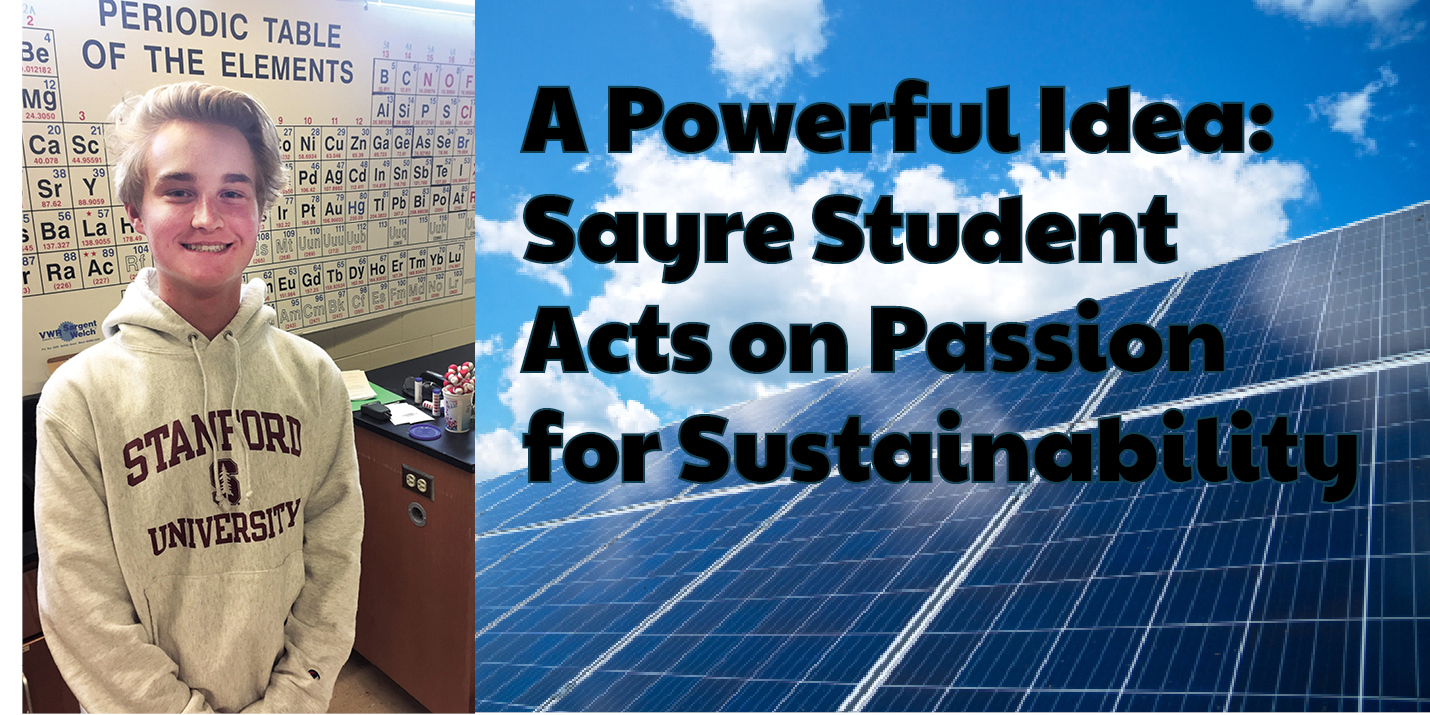Sayre School’s Science Lab to Utilize Solar Energy
Parker Stewart, a junior honor student at Sayre School, has spearheaded an effort to install 30 solar panels that will power the high school’s science labs, and it’s fitting that Parker is the one who developed the idea.
 Not only is he a dedicated conservationist who hopes to study environmental engineering at Stanford – of course he drives a hybrid – he’s a ball of energy himself.
Not only is he a dedicated conservationist who hopes to study environmental engineering at Stanford – of course he drives a hybrid – he’s a ball of energy himself.
Along with being an honor student, Parker is the junior class president, founder of the Young Moderates political club on campus, a member of the Honor Council and as a sophomore won the school’s prestigious Karl E. Knapp Environmental Sustainability Award, named for the Sayre alum and late Stanford professor who pioneered the research that led to solar panels.
Parker also played two years of varsity baseball and is on the tennis team. Plus, at the annual Kentucky Youth Assembly Conference in Louisville in November, he was elected Governor by 1,000 of his fellow student members.
His platform, not surprisingly, featured a program to train coalminers for renewable energy jobs.
Meanwhile, Parker is making renewable energy a reality at Sayre. Following discussions with his A.P. Environmental Science teacher, Debbie Wheeler, Parker dived into research about solar energy.
Using an App that determines how much sunlight a specific address receives, he concluded that the flat roof of Sayre’s Upper School building was the ideal location.
What if Sayre placed a solar panel there?
Ms. Wheeler recommended that he perform an energy audit of the science lab to see how much energy a typical lab uses per day. That led him to Synergy Home of Lexington, a local installer of solar panels.
Parker then developed a 15-minute power point presentation. Impressed, the science faculty recommended that Head of School Stephen Manella hear Parker’s pitch.
Before that meeting, Parker punched up his presentation after consulting his sister, Madison, who works for an advertising company in Seattle.
After hundreds of hours of work on the project, it was time to put his best foot forward.
“To be honest,” Parker said, “I thought I would make my presentation to Mr. Manella and he would say ‘Excellent job! However, we can’t really fund a project like that right now.’
“So, I was thrilled when he said he loved the idea and wanted to support the project.”
After Sayre supplied the initial seed money to provide infrastructure and the purchase of one panel, an interested family stepped forward with financial assistance.
The project now includes 30 solar panels, and installation is scheduled for late November.
“It feels surreal to think that an idea I had stemming from my A.P. Environmental class would have this kind of impact,” Parker said.
Ms. Wheeler praised Parker’s determination and commitment to his vision.
“Parker’s enthusiasm for this project was unique,” she said. “He put in a significant amount of time to research the suitability of the Sayre Upper School rooftop for solar panels and even did a cost/benefit analysis to calculate a rate of return.
“I’ve had other students talk about environmental initiatives on campus, but Parker had the persistence and tenacity to make it happen.”
Added Parker: “It’s not very often that something goes so well. It’s fantastic to see all of this hard work pay off.”

